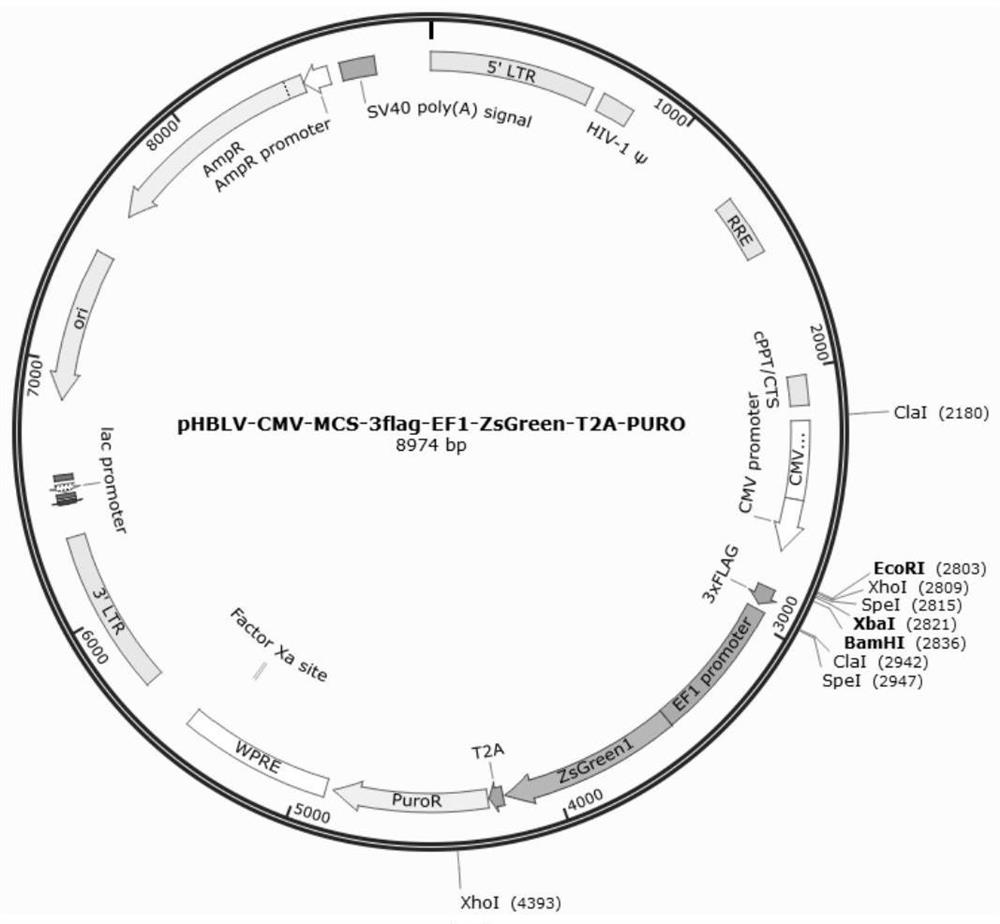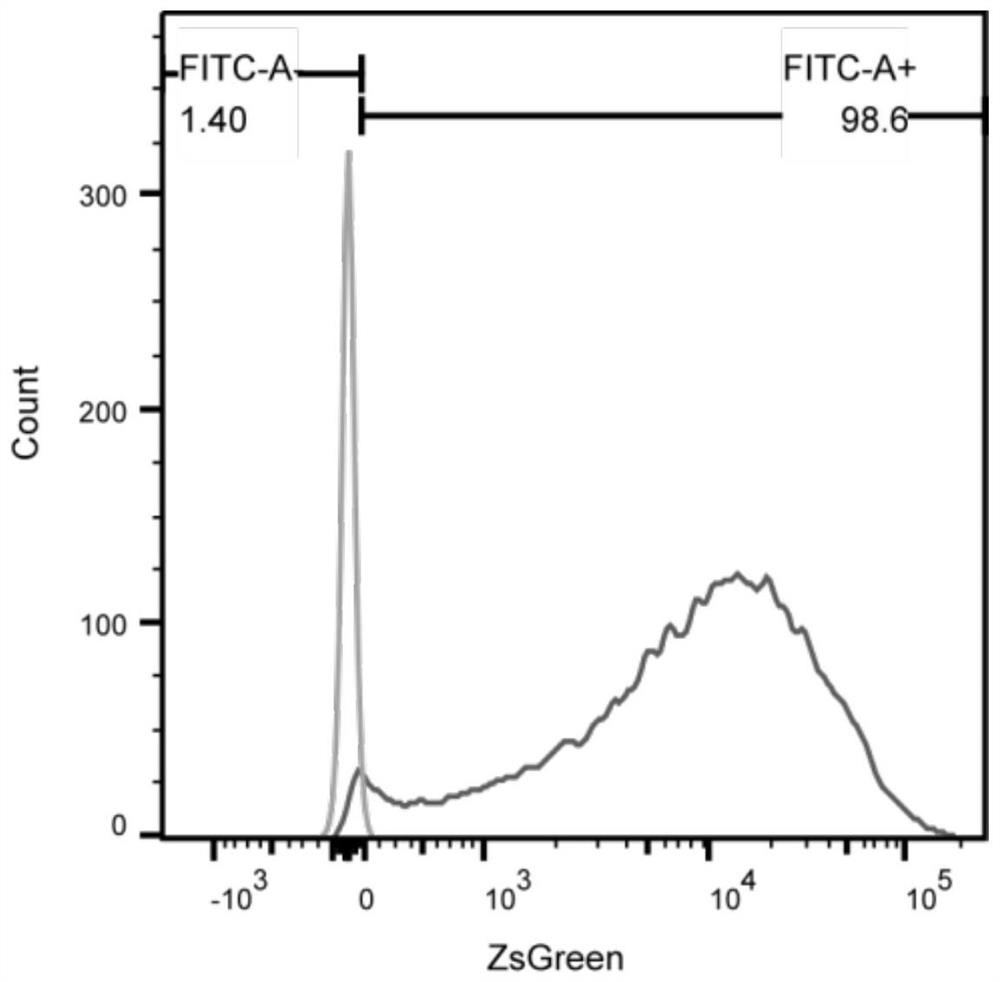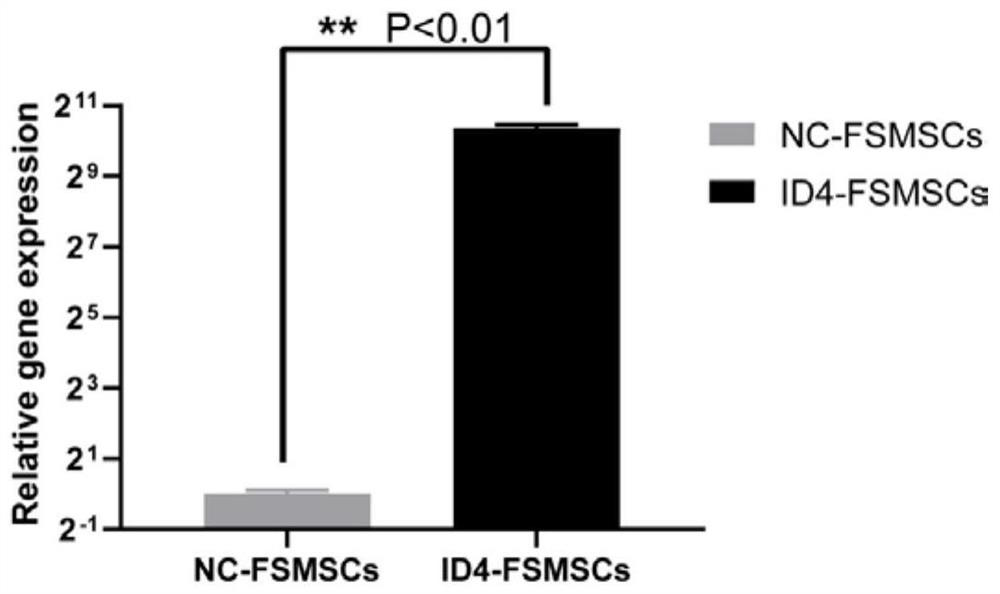Method for directly transdifferentiating prepuce-derived mesenchymal stem cells into sperms by using transcription factor ID4
A technology of stem cells and transcription factors, applied in the field of biomedicine, can solve the problem of not using male autologous adult stem cells
- Summary
- Abstract
- Description
- Claims
- Application Information
AI Technical Summary
Problems solved by technology
Method used
Image
Examples
Embodiment 1
[0055] This embodiment provides a method of using transcription factor ID4 to directly transdifferentiate foreskin-derived mesenchymal stem cells into sperm, which includes the following steps:
[0056] Step 1, packaging and purification of LV-hID4-Hygro-puro lentivirus: a three-plasmid lentivirus system is used for the virus packaging process. The three-plasmid lentiviral system includes the following plasmids: a vector plasmid carrying a gene of interest or shRNA, a viral packaging helper plasmid (psPAX2 vector), and a viral packaging helper plasmid (pMD2G vector).
[0057] 1.1 When the confluence of 293T cells reaches about 70%, passage 293T cells for transfection. The cells to be transfected should be prepared the day before: add 1ml 0.25% EDTA trypsin to each 10cm culture dish, shake and mix gently, so that all cells are exposed to trypsin, and then place it at 37°C with carbon dioxide volume Digest in a constant temperature and humidity incubator with a fraction of 5% f...
Embodiment 2
[0131] In this embodiment, flow cytometry is used to detect the haploid yield of ID4-FSMSCs-30, and the specific experimental steps are as follows:
[0132] 1. ID4-FSMSCs were induced and cultured for 30 days, the original medium was discarded, fresh medium was added, and live cell DNA dye (Hoechst) was added to make the final concentration 1 μg / ml, placed at 37°C, 5% CO 2 Cell incubator for 1 hour.
[0133] 2. After 1 hour of staining, the cells were taken out and washed twice with PBS for 5 minutes each time.
[0134] 3. Digest the cells with 0.25% trypsin, centrifuge at 800rcf for 5min, resuspend the cells with flow cytometry working solution containing 2% FBS+DPBS and count them, divide the cells into 5ml flow cytometry tubes, 5×10 per tube 5 cells.
[0135] 4. Centrifuge at 800rcf for 5min, and suck off the supernatant. Use 200 μL of flow cytometry working solution to resuspend cells, and use BDAriaIII flow cytometer for cell flow cytometry detection.
[0136] result ...
PUM
 Login to View More
Login to View More Abstract
Description
Claims
Application Information
 Login to View More
Login to View More - R&D
- Intellectual Property
- Life Sciences
- Materials
- Tech Scout
- Unparalleled Data Quality
- Higher Quality Content
- 60% Fewer Hallucinations
Browse by: Latest US Patents, China's latest patents, Technical Efficacy Thesaurus, Application Domain, Technology Topic, Popular Technical Reports.
© 2025 PatSnap. All rights reserved.Legal|Privacy policy|Modern Slavery Act Transparency Statement|Sitemap|About US| Contact US: help@patsnap.com



